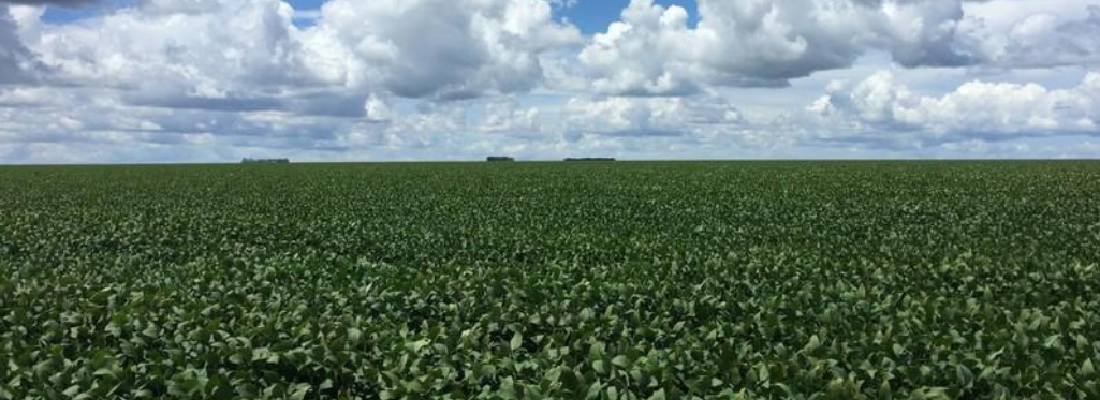
Seca compromete o rendimento da soja no Brasil
jan, 03, 2019 Postado pordatamarnewsSemana201902
Futuros de soja dos EUA estão em alta após notícias de que o clima seco no Brasil pode afetar sua safra de soja. O esforço comercial entre Washington e Pequim para estabelecer uma trégua também impulsionou as expectativas dos EUA, com os futuros de soja finalmente voltando a subir, chegando a US$ 9,09 por alqueire esta semana. Traders e analistas apontam para as condições de seca no Brasil, especialmente em Mato Grosso, no Paraná, e na nova fronteira agrícola, a região do Matopiba. De acordo com os dados do Painel de Meteorologia da Agricultura, algumas das áreas afetadas podem enfrentar até 40% de perda de rendimento potencial, com previsão de chuvas abaixo das médias anuais.
Fontes usadas:
https://www.reuters.com/article/us-global-grains-idUSKCN1OW1F4
Soy up on crop stress in Brazil, hopes for U.S.-China talks
CHICAGO (Reuters) – U.S. soybean futures climbed to a one-week high on Wednesday on declining yield prospects in Brazil and optimism about U.S. trade relations with top global soy buyer China, traders said.
As of 11:49 a.m. CST (1749 GMT), Chicago Board of Trade March soybeans were up 14 cents at $9.09 per bushel. CBOT March wheat was up 5-1/4 cents at $5.08-1/2 a bushel, and March corn was flat at $3.75 a bushel.
Soybeans led the way up and were on track to climb about 1.6 percent in the first trading day of the new year. Traders and analysts cited dry conditions in crop areas of central Brazil.
“People I respect are starting to slightly shrink the Brazilian soybean crop. It’s still a big crop, but not just not as big as what people were alluding to a month ago,” said Tom Fritz, a partner with EFG Group in Chicago.
Analysts also cited optimism that China might buy more U.S. soybeans as a trade delegation heads to Beijing for trade talks, although cash bids for soybeans shipped to the U.S. Gulf export terminal showed little change on Wednesday.
A media report last week said a U.S. trade team would travel to Beijing the week of Jan. 7 for talks.
“Cash markets are not telling me that China is doing anything regarding buying U.S. beans, but the market feels (hopeful) that this delegation is heading there,” said Matt Connelly, analyst at the Hightower Report in Chicago.
Excessive rains in parts of Argentina lent support to both CBOT soybean and wheat futures, analysts said. The moisture, coupled with forecasts for more rains in the next 10 days, could prompt a downgrade in the size or quality of Argentina’s wheat crop.
“Wheat is finally paying attention to the rains in Argentina. Plus, we beat the hell out of it to end the year,” Connelly said, noting that CBOT March wheat fell 1.6 percent on Monday and dipped to $5.01-1/4 a bushel, the contract’s lowest level since Jan. 24, 2018, on Wednesday before rallying.
Brazil soy seen threatened in early 2019 by below-average rains – data
SAO PAULO (Reuters) – The first days of 2019 will be marked by below-normal rainfall in Brazil’s main soybean producing areas, with farmers bracing for losses as December’s dry conditions and high temperatures continue to ruin fields.
According to Refinitiv Eikon’s Agriculture Weather Dashboard data, rains will be below the historical average through Jan. 10 in five states including Mato Grosso do Sul, Mato Grosso, Goiás, Paraná and São Paulo.
Together, these account for almost two-thirds of all the national soy production.
In the northeast of Mato Grosso, Brazil’s largest soybean producer, rains are forecast to be 50 millimeters (1.97 inches) below average for this time of year. In the south of the state of Paraná, Brazil’s No. 2 producer, fields will receive 20 millimeters (0.79 inches) less rain than normal, the data showed.
“The climate has affected, is affecting and may (still) affect the 2018-19 crop,” said Bartolomeu Braz, head of Brazil’s grain producers association Aprosoja, referring to the season that kicked off in September.
Braz mentioned yields falling by up to 30 percent in some areas, without elaborating. Rainfall has also been below average in the Matopiba region, Brazil’s new agricultural frontier composed of the states of Maranhão, Tocantins, Piauí and Bahia, he said.
The government estimates national soybean output at around 120 million tonnes. Before the drought reports, some analysts saw a potential to produce nearly 130 million tonnes.
NASA probe “phoned home” from beyond Pluto
So far, no major agribusiness consultancy has revised output forecasts lower.
In Paraná state, losses are estimated at between 500,000 tonnes and 600,000 tonnes, roughly 3 percent of the state’s production, according to estimates by Ocepar, an association of farm cooperatives. Ocepar manager Flavio Turra said in some fields farmers collected between 15 and 20 60-kilo bags per hectare, compared with 58 bags per hectare under normal conditions.
In Mato Grosso do Sul, some producers face potential yield losses of around 40 percent, said Guilherme Tamanini, a representative of the Chapadão do Sul farmers’ union. In that area, farmers may start harvesting two weeks in advance to mitigate the effects of the drought on the crop, he said.
“The drought was bad and it burned a lot of soy. Many producers (were forced) to anticipate harvesting,” Tamanini said.
-
Portos e Terminais
jul, 26, 2021
0
Contêiner eleva movimento de cargas e Porto de Santos supera recordes em junho e no semestre
-
Carnes
set, 01, 2021
0
Setor de carnes da Argentina contesta limites de exportação e fala em greve
-
Grãos
nov, 09, 2021
0
Empresas vão deixar de comprar soja de áreas desmatadas ilegalmente, diz manifesto
-
Fruta
out, 22, 2020
0
Exportações brasileiras de suco de laranja caem 26% no 1o. trimestre da safra 2020/21


